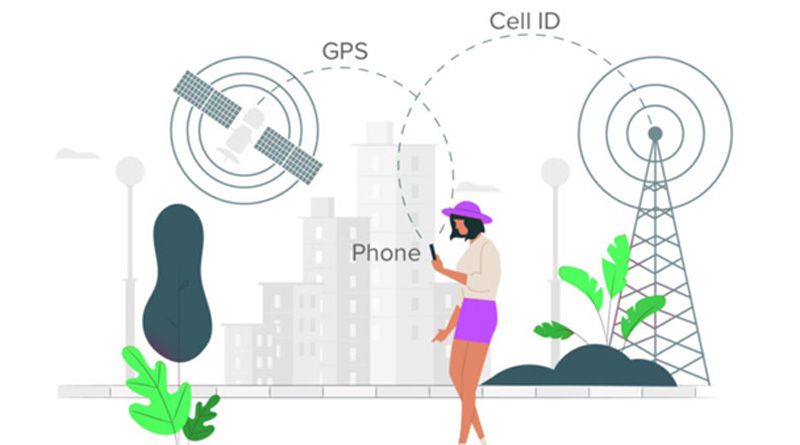Has it ever occurred to you that your phone spies on you? Have you thought over how you get ads for the items you just planned to buy?
Do you get notifications about the deals and sales as soon as you reach any mall? Or have you received any coupons when you pass by any cafe or coffee shop? We all experience it. Maybe Google has cracked the code to our thoughts. OR this is just a smart marketing tactic.
What if I tell you there is a way you can market your products or services even when customers are at competitors’ stores/sites without letting them know. Geofencing marketing makes it all happen.
What is Geofencing Marketing?
In simpler words, geofencing marketing is when you mark a space – neighborhood, building, or locality on a digital map and as soon as someone enters that zone your marketing campaign triggers and notifications are being sent to them.
Geofencing marketing falls in the category of location-based marketing strategies. A type of marketing that allows marketers to target audiences with a better-personalized experience. Using geographical location as information with the help of GPS and satellite to send you location-specific ads.
How Does Geofencing Work?
The best part about any geofencing marketing campaign is that it isn’t size-specific. That means businesses or brands of any size can take up geofencing marketing as an option.
Now the second question arises: how do we decide how bigger or smaller our fence is going to be? Well, generally you have the opportunity to expand your fence boundary as far as 1000 meters and as less as 200 meters.
A brand has full flexibility with its campaigns for geofencing marketing. Your campaigns can include anything from promotions, discounts, invitations to a simple greeting text just in case they wanna stop by. You don’t always have to be spoiling them with offers!
Moreover, you can schedule your notification based on web traffic. For example, if later evening hours you encounter heavier traffic flow then you can schedule your deals to flash at that particular time period to get maximum benefit.
Geofencing can be easily broken down into three simple steps:
1. Building Geofence
This step is what we just discussed, deciding an area to create a geofence and plan an ad campaign for that very geofence. Yes! For every fence, it is going to be different.
2. Adding/Removing Audience
Now, what does that even mean? When someone enters your geofence make sure you add them to your advertising audience list. If you miss this step you won’t be able to move on to the next step. Also, you don’t want to spam the people who have already left your geofence. Therefore keeping a track of the audience is a must.
3. Pushing Notifications
This is the step all the effort is for. Go ahead and start pushing notifications via text, in-app notification, websites ads, and whatnot.
Benefits of Geofencing Marketing
Geofencing marketing comes across as an interesting concept and a futuristic solution to all your marketing barriers but how exactly does your brand gain with this? Below are a few tempting results geofencing marketing brings to your brand growth.
1. Better Targeting
Geofencing offers the main advantage of making your notification more relevant. You are far more likely to engage customers if you reach out to geographically close people.
2. Effective Marketing
Increased engagement translates to improved marketing expenditure. With geofencing, you can reach larger audiences that are willing to invest, resulting in less money spent on less relevant customers.
3. Better Insights
You may acquire key insights on the pattern of traffic (when people are in/near your place), the duration of visits, and the campaign efficiency from the correct platforms.
4. Better Attribution
Geofencing fills a void that many marketers have long aimed at the link between advertising and performance. In evaluating ROI, that is huge assistance as you can observe both the ends of the tunnel, the campaign you built, and the response customers give towards it. What a win-win opportunity.
5. Mobile Marketing is the present
Mobiles have taken over the advertising industry. Stats reveal that nearly more than 90% of customers prefer information via mobile than any other source. Also as per statistics on Google, nearly 71% of buyers’ interaction occurs on mobile itself. This is why geofencing becomes a better targeting advertising solution for many digital businesses.
6. Individual and specific targeting as per your services
Geofencing marketing gives you the flexibility to sneak into your potential customers’ heads and space and offer a hand. Consider a career counseling firm that wants to reach the graduating students. Targeting specific high schools and colleges would be a much better choice than randomly showcasing your ads to a 10-mile radius.
7. Real-time Analytics
One of the major advantages of geofencing campaigns is that you don’t have to wait to make an impact and alter the strategy altogether. Geofencing campaigns tend to provide data the same day the campaign is launched. You get the liberty to upscale your strategy as per audience response.
8. Adaptive creative ads
Unlike the billboards which you can change only once in 6 months, geofencing ads can adapt as per the zone and target audience without any hassle. You can reach office professionals with a less dramatic look and feel while being loud for the students at the same time.
Limitations of geofencing marketing
As sophisticated as the idea of geofencing marketing may sound, it is vulnerable too. There can be instances when a device doesn’t register even when they enter the geofence. Moreover, in other circumstances, when the geofence is established around a store, but in crowded cities and other difficult-to-measure areas, this might result in devices being incorrectly linked to the reallocation.
How is Geofencing being used by Marketers?
Geofencing can be utilized in a lot of ways. There are multiple channels based upon your brand’s requirement, audience, traffic, and your product and services that you can opt for. Below are the commonly used ones, choose which one suits you best, don’t worry you can pick as many as you want. More is less here!
Mobile Application
Several companies have created apps, which customers can install and which marketers may use to broadcast in-app alerts when a person enters a geofenced region.
Text Engagement
No company wants to squander money on marketing by sending text messages every day. Geofencing is introduced. When a customer enters a geofenced region, text messages are only sent.
Third-Party App
For those brands that don’t have their apps, you can take help from third-party applications to send you notifications. For instance how many restaurants don’t have their application but you still get their offers and coupons highlighted on some dining apps.
Social Media Ads
You must have observed as soon as you install any social media app they ask for location permission. That is because the majority of these platforms have geofencing capabilities and with your location, you can see ads about all the geofenced areas that you might have crossed.
Web Ads
These ads are similar to social media ads with the difference that these are going to flash on your customer’s browser and not any application.
Conclusion
Geofencing Marketing can be a great initiative for boosting your store or social channel traffic. You must focus on your target audience. Knowing and targeting locations won’t do the deal for you. As long as you are clear with your research and targets you can build a successful geo-targeted marketing campaign.

Shiv Gupta started his journey in the digital marketing world at the age of 17. He grabbed deep knowledge of the industry and earned multiple awards. Incrementors was founded by him to provide the best marketing solution to struggling businesses with a goal to help them achieve higher sales and conversions. Incrementors don’t give fluff or “high-level” advice. They just give an insanely actionable plan that works.

